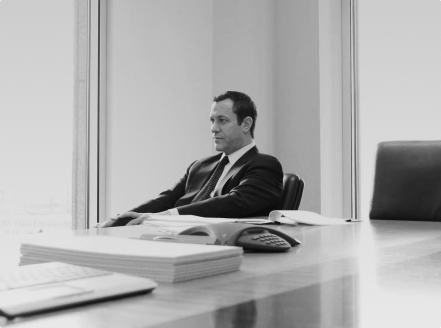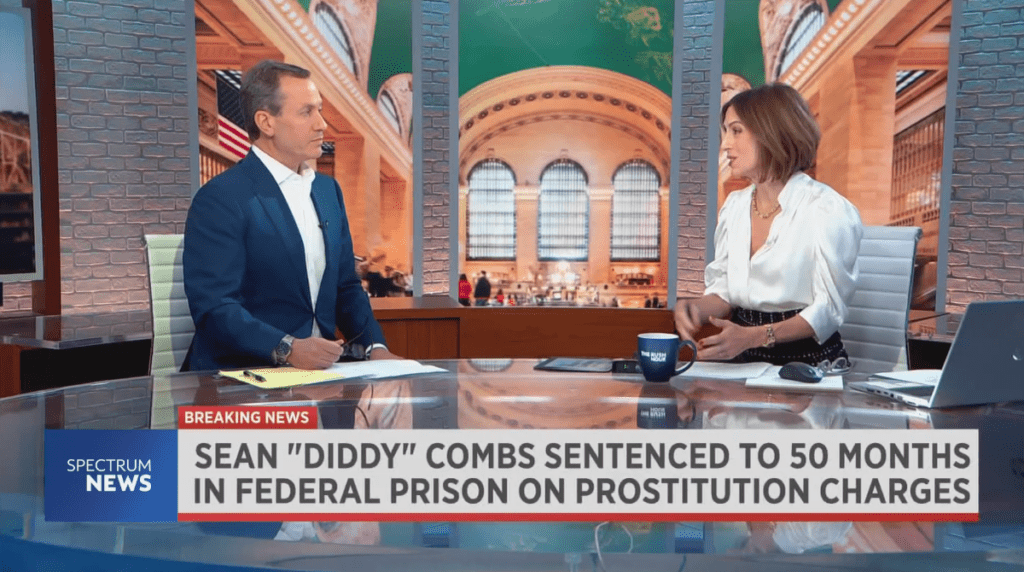Premises Liability Lawyer NYC
Premises Liability Lawyer NYC
Premises liability accidents can happen in several locations—from parking lots, shopping malls, apartment complexes, schools, office buildings, and more. Property owners, slumlords, and business owners can be held liable if they fail to take reasonable steps to prevent injuries to guests, tenants, shoppers, and workers. When dangerous conditions are allowed to persist, serious injuries can result.
All property owners have a fundamental responsibility to protect the public from harm. When negligence or wrongdoing causes an injury or loss, the injured party can seek compensation for their losses. The Law Offices of Eric Richman specializes in providing compassionate and expert legal services to personal injury victims in New York City. We are dedicated to helping our clients secure the justice they deserve.
-
Eric Richman Provides Legal Analysis on Diddy Sentencing
Erich Richman provides a legal analysis on Diddy's sentencing.

-

Free Consultation
If you or a loved one needs an expert premises liability lawyer NYC, please don’t wait. Contact The Law Offices of Eric Richman any time, 24/7, for a free consultation or call us direct at (212) 688-3965 or toll-free at (800) 801-9655.
Need the best premises liability lawyer in NYC to fight for you? The Law Offices of Eric Richman can guide you through:
- Doctor and hospital bills
- Physical therapy
- Long-term medical care
- Diagnostic testing
- Lost wages
- Future earnings potential
- Punitive damages
- Emotional distress
- Pain and suffering
- Other out-of-pocket expenses
Settlements In NYC
The Law Offices of Eric Richman has an established record of winning cases and securing millions of dollars in settlements for personal injury victims in NYC. These settlement amounts have helped our clients avoid financial devastation after devastating injuries and personal and professional losses. Learn more about our most recent settlements below.
Eric Richman, Esq. is an expert lawyer with extensive experience handling premises liability cases in NYC. We’ve listed a recent settlement below for your consideration.
$450,000 in a slip and fall / NYC personal injury
A client was injured when a New York City landlord neglected to shovel the snow on the sidewalk in front of his building. The client had multiple leg and knee tears, requiring surgeries. Our team was able to prove that a significant amount of time had elapsed between the last weather event and the accident. The client was compensated $450,000 for his injuries.
Confidential Amount in a premises liability / fall from window
A landlord in Queens decided to cut costs by not providing window guards to his tenants. Tragically, a child fell out of the window and sustained serious injuries. Eric worked with the family to obtain the maximum settlement possible.
Understand All Your Options
After an injury, deciding on the best next steps and making the most informed legal decisions can be challenging. Understanding more about applicable laws and regulations and contacting an expert premises liability lawyer in NYC can help ensure you avoid making decisions that can compromise your case.
We offer free initial consultations, 24/7, 365 days a year. Contact us anytime to discuss the details of your case. In the meantime, we’ve answered the most common questions about premises liability below.
FAQs
This is not legal advice.
Since every case is unique, consider working with a lawyer to get advice on your specific situation.
What Is Premises Liability?
Premises liability refers to the legal responsibility of property owners, slumlords, and business owners to maintain safe conditions to prevent injuries to guests, tenants, shoppers, and workers. Common types of premises liability accidents include:
- Slip and Fall Accidents: These occur when a person slips and falls on a hazard, such as improperly maintained staircases, flooring, parking lots, or sidewalks. Property owners can also be held liable for injuries caused by slick conditions caused by snow and ice or for not properly displaying warning signs around slippery areas
- Trip and Fall Accidents: These accidents occur when a person trips over an object that causes them to stumble and fall, which can lead to serious injury. Common causes include cracked and defective sidewalks, broken stairs, or missing stair railings
- Lack of Maintenance: Buildings that are not properly maintained can pose serious safety risks to the public. Broken elevators, escalators, hazardous light fixtures, and cracked stairs can lead to life-threatening injuries.
- Poor Security: Property owners can be liable for negligence if they create an unsafe environment that facilitates crime. This can include not repairing door locks, inadequate lighting, and failing to evict criminal elements, which can lead to assaults, robberies, rapes, murders, and other crimes that cause injury or death.
What Is the Statute of Limitations for a Slip/Trip and Fall Accident in NYC?
In New York, individuals generally have three years from the date of injury to file a personal injury claim. However, if the property owner is a city, town, or municipality, the limit can be as little as 90 days. Special rules may apply to cases involving minors and other exceptional circumstances, but expert legal advice should be sought for more specific guidance.
Should I Fill Out or Sign an Accident Claim Form if I Slip and Fall in a Store?
Each case is unique, and seeking legal advice to determine the proper course of action is crucial. Contact an expert premises liability lawyer NYC to discuss your specific situation. For detailed information or to discuss your case, please contact us today.
What Types of Compensation Can I Receive?
Compensation typically depends on the extent of the victim’s damages and injuries. You may be eligible for compensation for medical expenses, lost wages, pain and suffering, and property damage. Please contact us if you have any questions about compensation or settlement amounts.

Eric Richman, Esq. Is the Only Premises Liability Lawyer NYC You Should Call
Eric Richman, Esq., is an experienced New York City personal injury lawyer who has dedicated his career to fighting for injury victims and their families. Mr. Richman has won millions of dollars for his clients and is one of the best-known and most respected personal injury attorneys in New York City.
In the landscape of personal injury lawyers, Mr. Richman’s commitment is unparalleled. For his clients, he answers each and every phone call, 24 hours a day, seven days a week.

Locations We Serve
The Law Offices of Eric Richman is a New York City personal injury law firm located on the Upper East Side of Manhattan. Our experienced lawyers provide outstanding personal injury legal representation to individuals and families who suffered injuries in and around New York, including:
What Our Clients Are Saying
Our law firm has spent decades working tirelessly to provide our clients with the best possible legal representation and outcome. The positive reviews of our current and former clients are the best record of our success and contributions to NYC. Read what they have to say about us below.

Contact The Law Offices of Eric Richman for a Free Consultation
Premises liability accidents can be legally complex, posing serious challenges to injured parties struggling with their injuries. You do not need to fight alone if you are in this situation. The Law Offices of Eric Richman has extensive experience with premises liability law. We can help you make decisions that result in the best possible legal outcomes.
If you’re struggling to cope with injuries and financial damages caused by a property owner’s negligence, let us help you. We provide free initial consultations to discuss the details of your case. We also provide confidential home or hospital visits if you cannot travel.
Contact the Law Offices of Eric Richman for a free consultation, or call us direct at (212) 688-3965 or toll-free at (800) 801-9655 to discuss your case with the best premises liability lawyer NYC. We’re here to represent you during this challenging time

